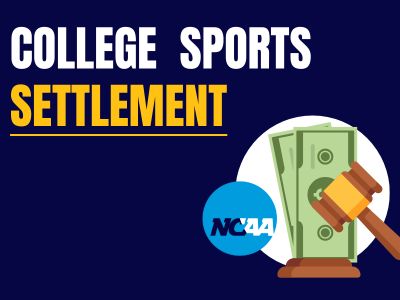Sweeping changes may come to the National Collegiate Athletic Association (NCAA) if a California judge approves a multi-billion-dollar settlement.
This settlement is complicated. Here is the debrief.
The settlement was reached in May 2024, and Judge Claudia Wilken gave preliminary approval on Oct. 7, 2024.
The settlement would resolve three separate cases: House v. NCAA, Hubbard v. NCAA and Carter v. NCAA. If approved, schools can share $20.5 million of their athletic revenue for name, image and likeness (NIL) deals.
According to an article in The Athletic, “The vast majority of schools are having to figure out where those revenue share funds will come from…All are adjusting budgets in some fashion…”
Athletic departments are also actively pursuing fundraising campaigns to generate additional revenue or exploring internal budget cuts, according to The New York Times.
The lead lawsuit, House v. NCAA, was filed in 2020 by former Arizona State University swimmer Grant House. House sought damages totaling $2.8 billion for college athletes dating back to 2016 who missed out on opportunities to earn money from their name, image and likeness (NIL).
In another new development from the settlement, NCAA D1 schools’ scholarship limits will be replaced by roster limits.
According to DesertNews, “…the roster limits will undoubtedly lead to lost opportunities, including for potential walk-ons who may have developed into stars if given the chance.”
Lincoln senior and UCLA track and field/cross country commit Sophia Malinoski says that these roster limits will not only affect walk-on athletes, but also athletes who are not ready for the collegiate level.
“There’s a lot of walk-on athletes that are not necessarily as qualified to compete when they’re in high school, but then once they come, they’re training with the team for a year in college. They end up being really successful and one of the best players on the team,” said Malinoski.
Junior Jaxon Barber wants to play football at the collegiate level. He agrees with Malinoski that walk-ons are important for athletic programs.
“It’s really unfortunate and sad because walk-ons now are almost…unneeded. Why take a walk-on when you can go get someone out of the transfer portal?” said Barber.
According to ESPN, the new NCAA changes will give student-athletes the ability to negotiate NIL deals with schools or other organizations before they enroll.
Lincoln cross country and track and field coach Marie Markham is a former NCAA Division 1 athlete at the University of Oregon. Markham says that NILs and the changes to the NCAA have brought opportunities to athletics but also have caused many problems.
“[These changes] are taking the love out of sport, in my opinion, and it’s become a job for these kids in some ways. It gives athletes awesome opportunities to further themselves in sports, but it’s taken away just the joy of being an athlete,” said Markham.


